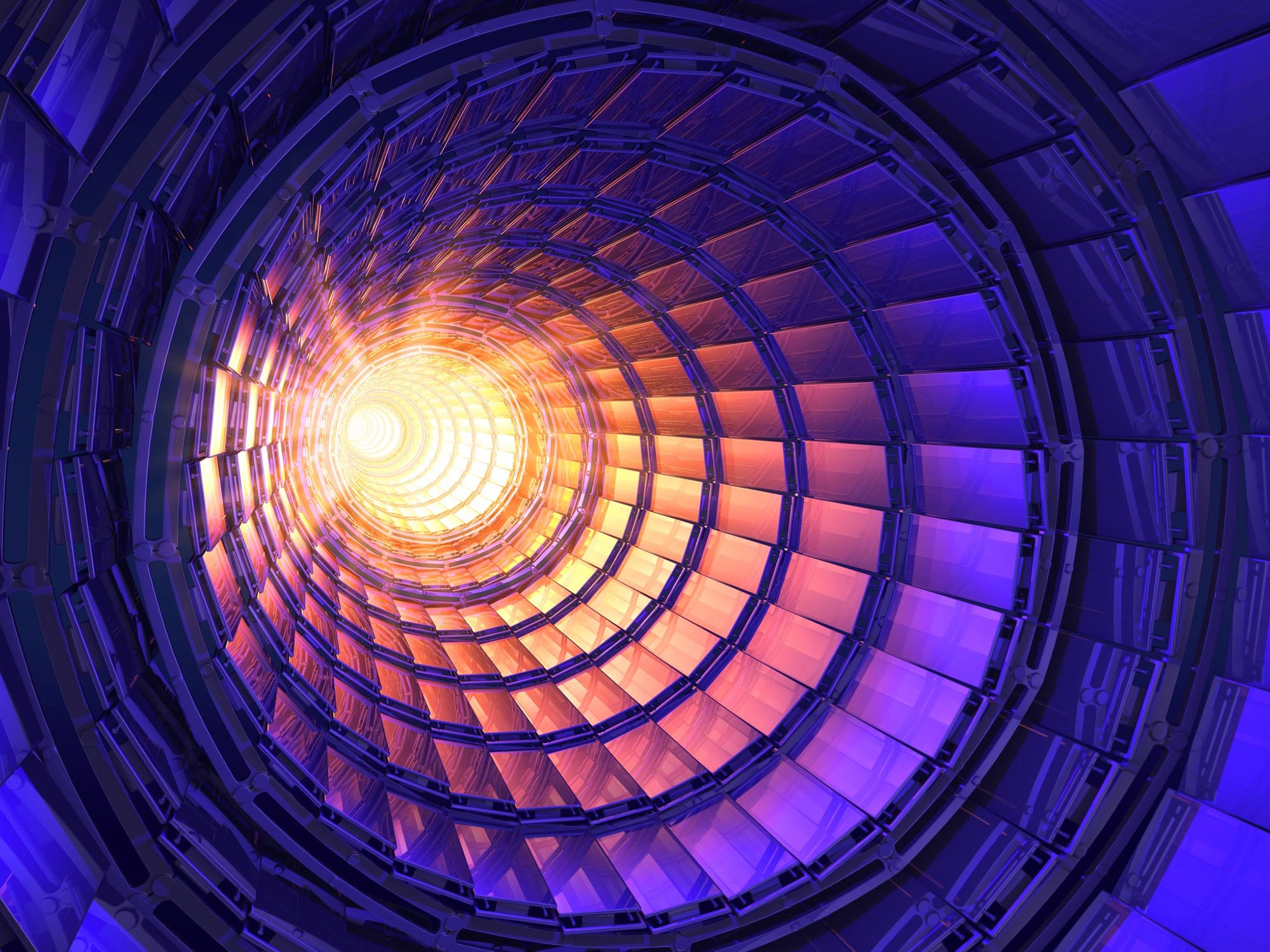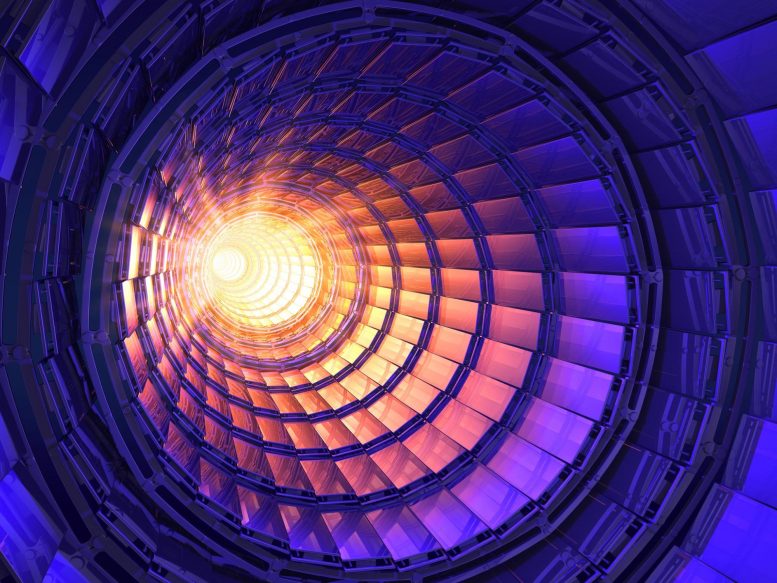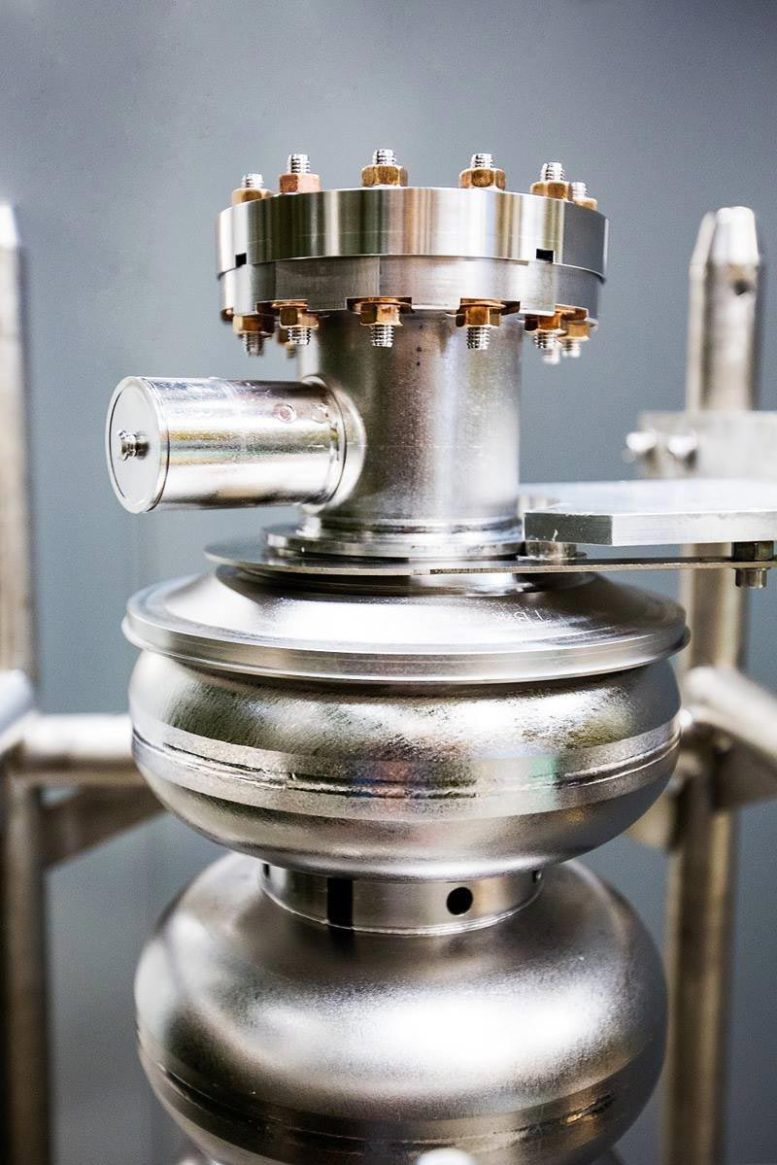

A new toolkit helps monitor and improve the efficiency of superconducting radiofrequency cavities in particle accelerators by ensuring smoother inner surfaces and analyzing impurities in niobium cavities.
Superconducting radiofrequency (SRF) cavities are essential to the function of advanced particle accelerators. They are a key part of the systems that power the electromagnetic fields that accelerate subatomic particles. The efficiency of these cavities is influenced by the cleanliness, shape, and smoothness of their inner surfaces.
Enhancing SRF Cavities with New Toolkits
Researchers have developed a new toolkit to enable accelerator builders to better monitor and control the characteristics of inner cavity surfaces. Tests have shown that smoother SRF cavities operate more efficiently, demonstrating that surface smoothness directly correlates with performance. The toolkit can also predict cavity performance by quantifying a cavity’s surface smoothness.

The Role of Niobium in Particle Acceleration
SRF cavities made of niobium are the standard for efficient, high-power acceleration of particle beams. Adding contaminants to niobium cavities can further enhance their efficiency. But these enhanced cavities can’t withstand high-power operations as well as pure niobium cavities can. This research studied the surface roughness of cavities with added nitrogen or oxygen.
The result highlights the crucial role that surface topography plays in performance. It also hinted that oxygen would provide the cheapest gains in efficiency. The goal of the toolkit this research developed is to help accelerator scientists make better SRF cavities for future accelerators by controlling surface smoothness and impurities.
Investigating Cavity Topography and Performance
Particle accelerator scientists have developed a novel toolkit for investigating SRF cavity topography and its impact on performance. The toolkit was built on decades of empirical research in surface processing of niobium SRF cavities. In this work, the team used the toolkit to investigate samples treated with the same recipe applied for cavities adopted by upgrade projects at the Linac Coherent Light Source, a Department of Energy (DOE) user facility. These upgrades are the DOE’s latest additions to its SRF accelerator fleet.
Impact of Grain Boundaries on SRF Performance
Their study revealed that the grain boundaries, formed as the niobium metal is made, play a role in performance. Grooves develop along grain boundaries after chemical processing of nitrogen-doped niobium. Atomic force microscope measurements combined with an algorithm based on differential surface geometry predict a suppression factor of the superheating field due to these grooves. The grooves are found to degrade SRF cavity performance because of early breakdown of doped surfaces. Thus, a smoother surface would give better performance for higher fields.
The researchers also made new measurements of niobium samples prepared with a simplified oxygen-doping process. These cavity samples showed better topography. This indicates that controlling the surface smoothness and impurity profile may help boost performance both in high efficiency and high fields to help DOE’s future SRF accelerators, such as the Electron-Ion Collider (EIC).
Reference: “Topographic evolution of heat-treated Nb upon electropolishing for superconducting rf applications” by Eric M. Lechner, Jonathan W. Angle, Carrie Baxley, Michael J. Kelley and Charles E. Reece, 10 October 2023, Physical Review Accelerators and Beams.
DOI: 10.1103/PhysRevAccelBeams.26.103101
This material is based on work supported by the Department of Energy Office of Science, Office of Nuclear Physics, by an Office of Nuclear Physics Early Career Award, and by the DOE Office of Science Office of High Energy Physics.